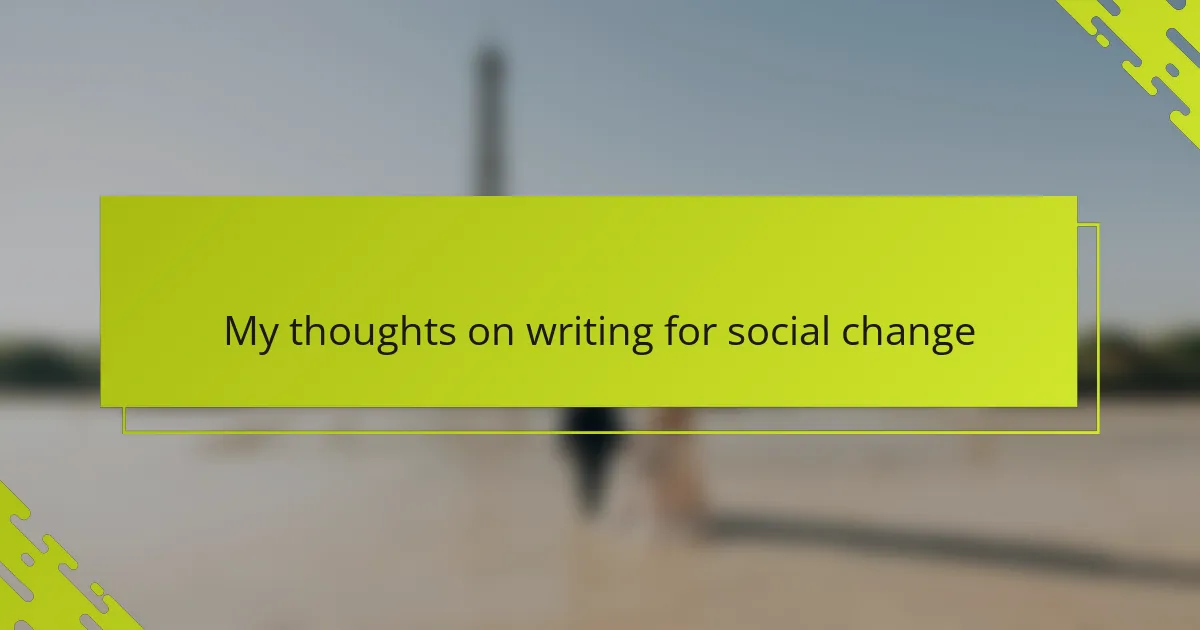Key takeaways
- Queer women culture emphasizes the importance of community, creativity, and shared stories that foster resilience and authenticity.
- Writing for social change involves giving voice to unheard stories, challenging injustices, and fostering empathy through intentional communication.
- Techniques for impactful writing include grounding narratives in personal experiences, using vivid details, and balancing honesty with hope to engage readers.
- Promoting queer inclusion in writing requires amplifying marginalized voices, inviting empathy, and maintaining a balance between authenticity and safety.
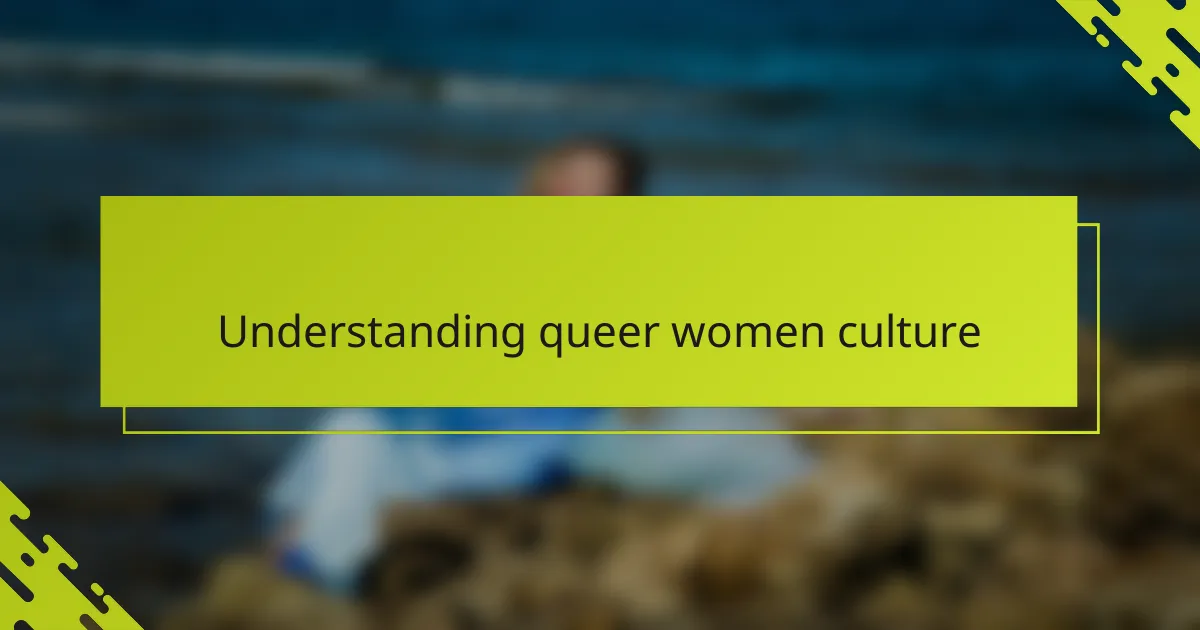
Understanding queer women culture
Understanding queer women culture means recognizing the vibrant tapestry of experiences that shape our identities. I’ve often found that it’s not just about labels but the ways in which community, resilience, and creativity intertwine uniquely for each of us. Have you ever noticed how much power there is in shared stories and quiet moments of solidarity?
For me, queer women culture is as much about visibility as it is about the subtle, everyday acts of resistance—whether that’s choosing to be seen authentically or creating spaces where we can thrive without fear. How often do we stop to appreciate the richness of our histories and the diverse ways they manifest in art, language, and connection?
It’s personal, too. I remember feeling invisible in spaces that should’ve felt safe, which made me realize just how vital it is to listen deeply and write with care. That emotional undercurrent is what fuels my commitment to writing for social change within this culture.
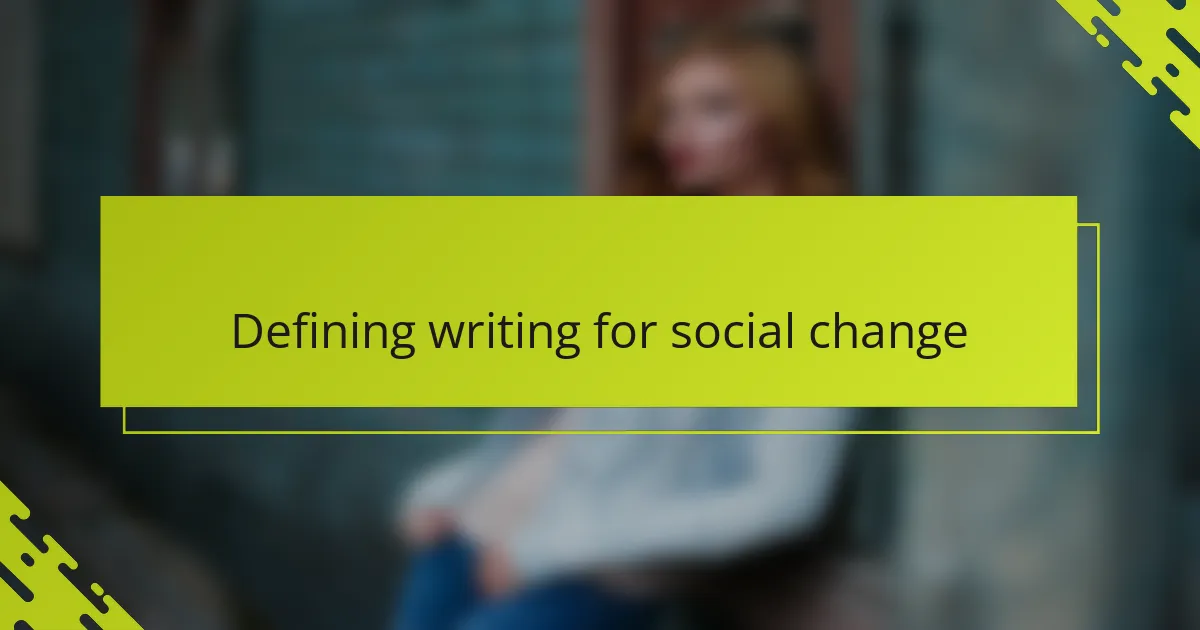
Defining writing for social change
Writing for social change, to me, goes beyond putting words on a page—it’s about giving voice to stories that often go unheard. Have you ever felt that surge of hope when your writing connects with someone who sees themselves reflected in your words? That’s the heartbeat of transformative writing.
It’s not just storytelling; it’s intentional, purposeful communication aimed at shifting perspectives and challenging injustices. I recall moments when a single sentence sparked conversations in my community, reminding me how powerful writing can be as a catalyst for change.
But defining it isn’t always straightforward. Is it the message? The audience? Or perhaps the courage to speak truth to power? For me, writing for social change means holding space for both vulnerability and strength, using language as a tool to inspire action and foster empathy.
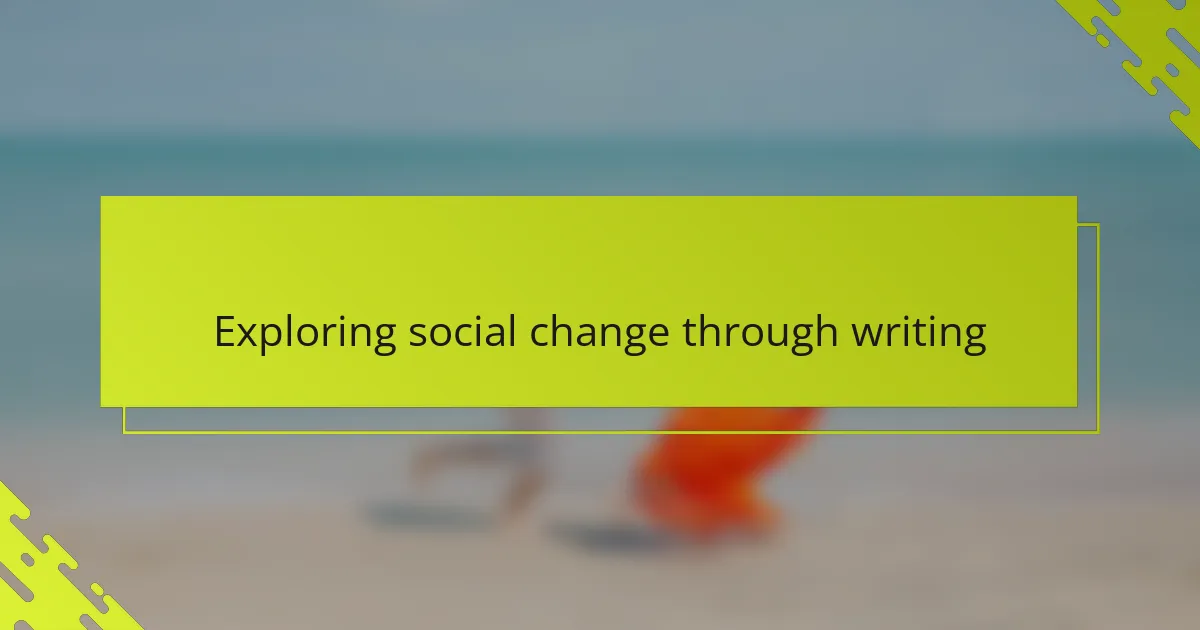
Exploring social change through writing
Exploring social change through writing often feels like walking a tightrope between hope and frustration. I’ve found that each piece I write carries a tension—will it break through silence, or will it be swallowed by indifference? Have you ever wondered what it takes to move hearts, not just minds, with your words?
Sometimes, a simple story can plant a seed of change in unexpected places. I remember sharing a personal essay that sparked a dialogue among friends who rarely talk about identity or justice. That moment reaffirmed for me how writing creates ripples that grow beyond the page.
But it’s also messy and challenging. How do we balance honesty with care? I’ve learned that exploring social change through writing isn’t about providing neat answers—it’s about opening doors to new ways of seeing, inviting readers to step through and imagine a different world alongside us.
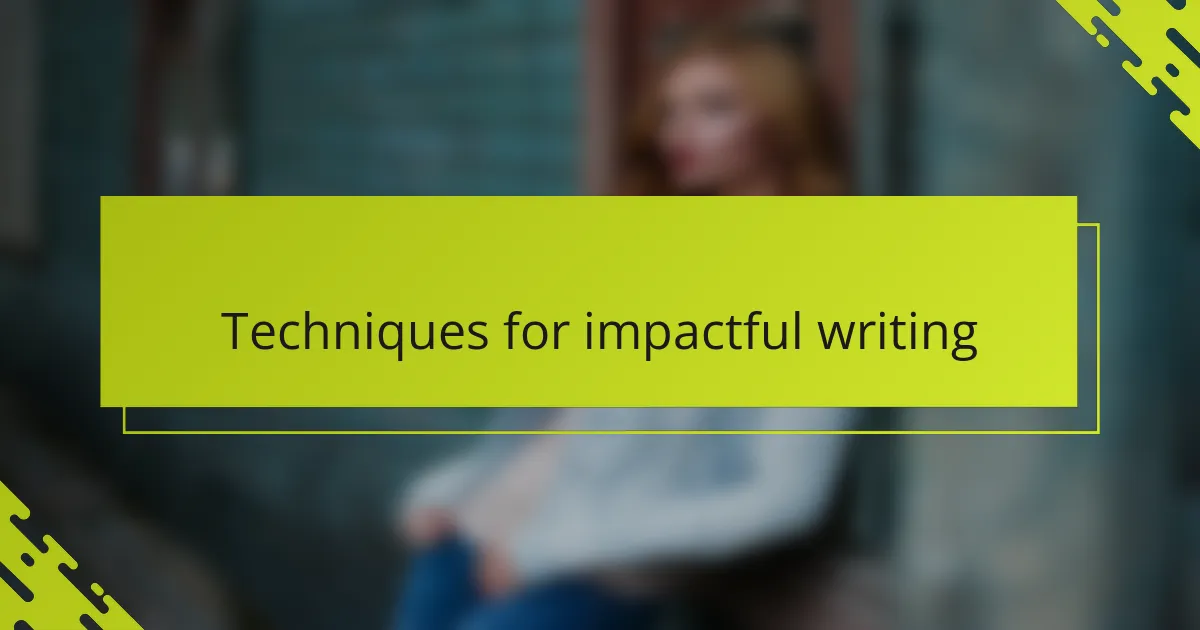
Techniques for impactful writing
One technique I rely on is grounding my writing in lived experience. When I share moments that felt raw or deeply personal, it’s like offering a hand to the reader—inviting them into a shared space of understanding. Have you noticed how vulnerability can make even the most complex issues feel closer and more real?
Another approach that has worked for me is using vivid, concrete details instead of abstract ideas. For example, describing a quiet protest, a whispered conversation, or the texture of resistance in everyday life brings stories alive. It’s those sensory details that create emotional resonance and make social change feel urgent and tangible.
I also pay close attention to tone—balancing honesty with hope. Writing that leans too heavily on despair can close off readers, but sprinkling in moments of possibility keeps the door open for transformation. How do you keep your writing both truthful and inviting? For me, it’s about trusting that even small sparks can ignite bigger change.
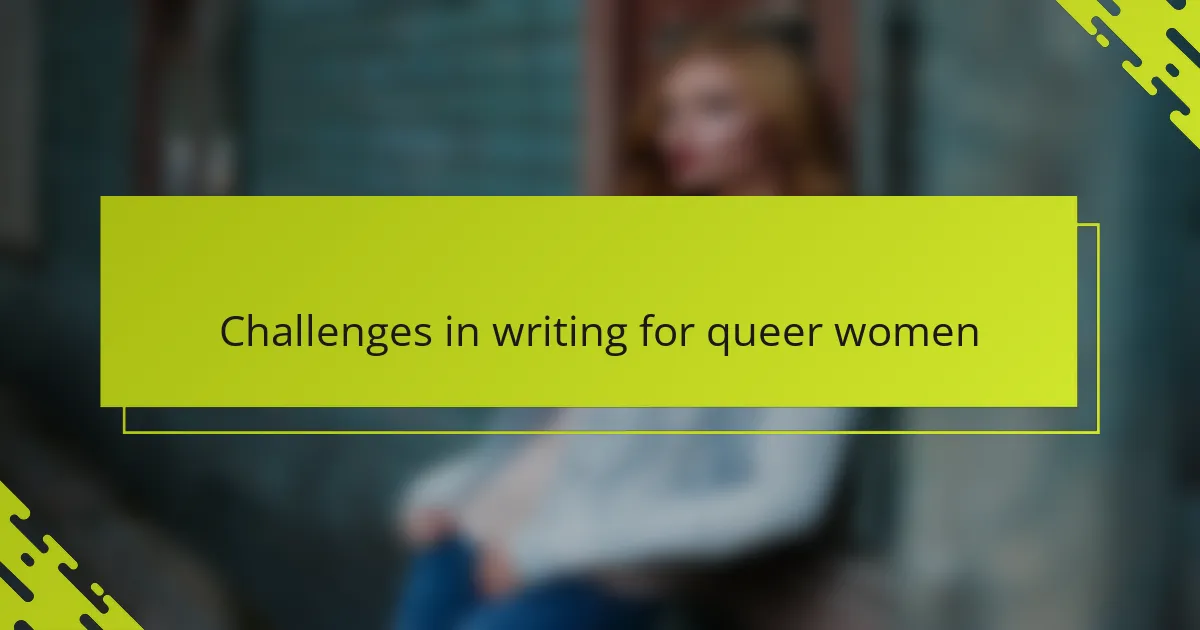
Challenges in writing for queer women
Writing for queer women often means navigating a landscape filled with invisibility and misunderstanding. I’ve felt the sting of my words being overlooked or simplified, as if the complexity of our experiences doesn’t fit neatly into mainstream narratives. Have you ever struggled to capture the nuances of identity without resorting to clichés or stereotypes?
Another challenge lies in balancing authenticity with safety. Speaking openly about queer women’s lives can invite scrutiny or backlash—something I’ve personally faced when pushing boundaries in my writing. How do you stay courageous enough to tell your truth while protecting your well-being in a world that isn’t always ready to listen?
There’s also the weight of representation. I’ve experienced the pressure of feeling like my words must carry the weight of the entire community’s story, which can be overwhelming. Does anyone else feel that tension between being a storyteller and a guardian of collective experience? Finding that balance is an ongoing, often deeply personal journey.
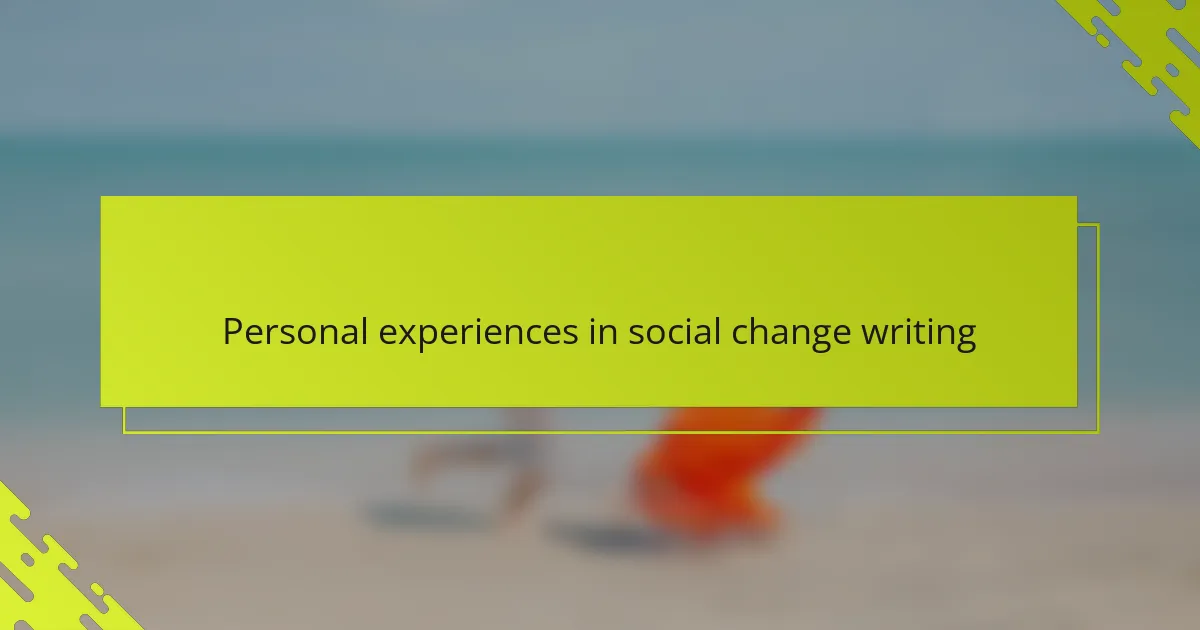
Personal experiences in social change writing
Writing for social change has often felt like stepping into a space where my own story becomes inseparable from a larger movement. I vividly recall a time when sharing a personal reflection on resilience within queer communities led to a passionate exchange with readers who saw their struggles mirrored in my words. Have you ever experienced that moment when your writing not only speaks but listens back to you through others?
There have been moments too when the weight of responsibility felt almost paralyzing. I questioned whether my voice was strong enough to challenge prevailing narratives or if I was simply adding to the noise. Yet, in those vulnerable stretches, I discovered that honesty—no matter how imperfect—is what truly resonates and fosters connection.
Sometimes, writing for social change means sitting with discomfort and embracing uncertainty. I once drafted a piece that risked upsetting long-held assumptions, and the responses I received reminded me how transformative—and necessary—that tension can be. How often do we write not just to comfort, but to provoke thought and invite discomfort as a path to growth?
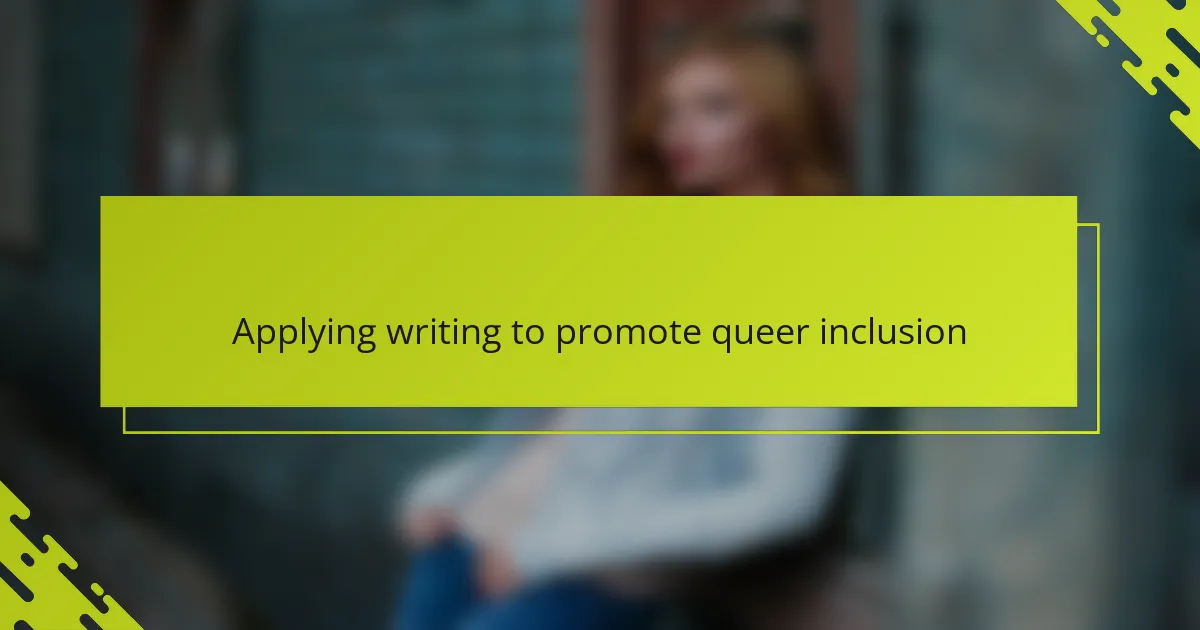
Applying writing to promote queer inclusion
When I write to promote queer inclusion, I see my words as bridges—connecting individual experiences to a broader understanding. Have you ever noticed how a single story can humanize what feels distant or misunderstood? That moment of recognition is where inclusion begins for me.
Sometimes, it’s about disrupting the silence surrounding queer lives by amplifying voices often sidelined. I remember sharing a piece about the everyday challenges faced by queer women that sparked heartfelt conversations among readers who hadn’t considered these nuances before. That experience taught me how writing can open doors to empathy and deeper connection.
Yet, I also grapple with ensuring my writing invites rather than alienates, balancing honesty with warmth. How do we create narratives that welcome readers into queer spaces while respecting the complexities of identity? For me, it’s a continuous practice of listening as much as speaking through my words.
